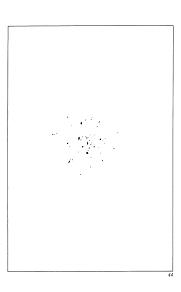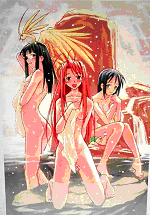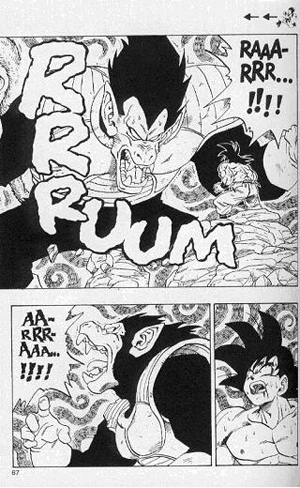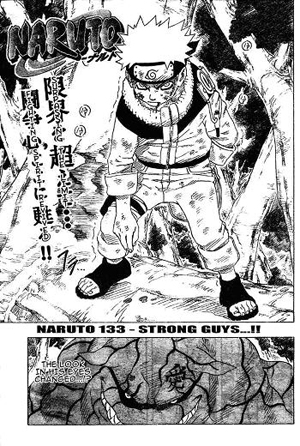
This page is the destruction of Namek which ended the Goku vs. Freiza arc, which is where Toriyama originally wanted to end the manga. As we know the manga kept going for two more arcs, the Cell arc and (my favorite) the Majin Buu arc. While most non-DBZ fans lambaste the series for the length and overdone fighting, fan demand kept Dragonball going further then its creator intended.
Second, the perception of what fans want drives what creators and companies throw toward fans. The increase of fan service

(using images that appeal to fan's more . . . baser urges . . . such as this one . . . forgive me oh editor . . . ) have become increasingly common, to the point that Love Hina, the manga this image came from, become a run away hit for Ken Akamatsu, many would argue become of its huge amount of fan service. While it can be debated this falls under category 1, the increase in fan service has both increased and decreased fan demand, as those who like it want more and those who don't like it don't' go for it. Much like the trend of crossover craze in American comics (that a fan must buy every comic associated with a major storyline or "crossover") it sells, but it doesn't attract the same fans that solid storytelling does.
Third, and to me the most important in terms of study of the elements of manga, are that fans affect manga and the atmosphere the manga is consumed in; fans color the perception of who buys manga, and who they are truly intended for. While comics are for "kids" in the U.S., the perception of being a hardcover "otaku", or manga/anime consumer (though it has large connotations which I'll probably hit on in two months), is that only the most nerdy of the nerdy are otaku, or truly love manga. Therefore this "perception" makes it so more and more manga are aimed toward and talking about this sub-culture. In addition, marketing toward fans, making things the fans will buy; only increase the perception of this atmosphere. It becomes a circular effect . . . and only tightens the market. To further this point fans both strengthen and hinder the market for manga, they buy it serve as the primary audience, but make the market harder to enter for new comers (sound familiar comic book fans?). It's hilarious to listen to old school manga fans that want certain "older" trends in manga . . . but don't want new fans to join and "dilute" the fan base with . . . stupid stuff. We end helping and hindering the elements of manga as fans . . . and we'll see how this looks to me after I go to con season in the Seattle two weekends in the a row in April.
Jya mata otaku!
|





